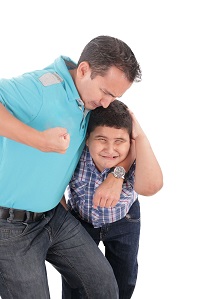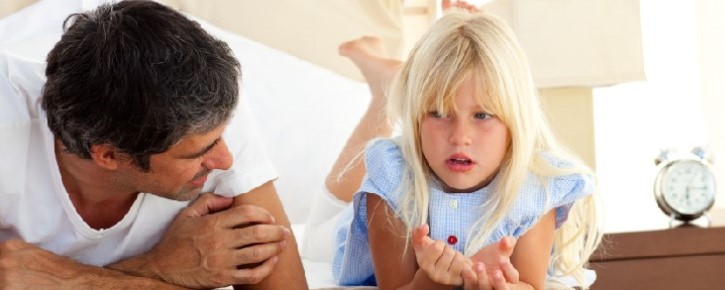Diana Zuckerman, PhD and Sarah Pedersen, National Center for Health Research
In fairy tales the stepmother is the enemy, but father surrogates—a man who takes over the functions of the biological father—are often considered a great addition to a family. The conventional wisdom is that children of single mothers, especially boys, need a man in the home to provide a role model. Unfortunately, some studies find that children with a father surrogate living at home are more likely to be reported for maltreatment—abuse and neglect—than those with a biological father at home or, as some research shows, no father figure at all.
A 2009 study by Lawrence Berger and colleagues examined whether Child Protective Services (CPS) involvement varied based on a man in the mother’s life.[1] Using data on 2,297 families from the Fragile Families and Child Wellbeing Study, the researchers categorized relationships according to whether the mother was living with a (male) partner or spouse, was involved in a dating relationship, or was not romantically involved. Families in which the mother had a partner were further characterized by whether her partner was the biological father of none, some, or all of the children in her household.
Father Figures vs. Biological Fathers in the Home


Results of the 2009 study showed that families living with a man who was not the biological father of all the children in the home, and families living without a man in the home, were significantly more likely to be contacted by CPS compared to families in which the biological father of all the children lived with the mother.
The following year, a report on the National Incidence Study of Abuse and Neglect, which examines not only CPS cases but all reported incidences of abuse and neglect to community professionals, also found that maltreatment rates differed according to family structure.[2] Children living with their married biological parents had the lowest rate of abuse and neglect, whereas those living with a single parent who had a partner living in the household had the highest rate. Compared to children living with married biological parents, those whose single parent had a live-in partner were at least 8 times more likely to be maltreated in one way or another. They were 10 mores more likely to experience abuse and 8 times more likely to experience neglect.
A 2001 study by Aruna Radhakrishna and colleagues at the University of North Carolina followed 644 North Carolina newborns for eight years. These babies were mostly from families considered at high risk of abuse or neglect based on the characteristics of the mother and infant at birth. Researchers found that maltreatment was lowest among children who lived with two biological parents.[3] Maltreatment was most common in homes with a stepfather or boyfriend, with 80% of the maltreatment occurring between birth and age 4, 20% between ages 4-6, and 27% between ages 6-8. Unlike the 2009 study, however, this one found no significant difference in maltreatment rates between kids living with both parents and kids living with only their biological mother.
A limitation of this study is that the person doing the abusing or neglecting was not identified. Therefore, in homes with a stepfather or boyfriend, it is unclear whether the mother or surrogate father was abusing or neglecting the child.
Biological Parents (and Not Just Single Mothers) Mistreat Their Children, Too
A 2010 analysis of the National Child Abuse and Neglect Data System (NCANDS) found that a majority (80%) of perpetrators—those responsible for the abuse and/or neglect of a child—in 2009 were parents.[4] Of these, 85% were the biological parents, 4% were stepparents, and 1% were adoptive parents. Four percent of perpetrators were the unmarried partners of the biological parent. Though the report did not gather data on whether the biological parent was the father or mother or whether the parent was a single head of household, the data do show that 45% of all perpetrators were male, while 54% were female (1% were unknown).
A 2005 analysis of child maltreatment in 18 states funded by the Department of Health and Human Services (HHS) had a similar breakdown by sex: it found that of 192,321 perpetrators of abuse and/or neglect, 46% were male and 54% were female.[5] Of the male perpetrators, 51% were biological fathers. The second largest group of male perpetrators was nonparents (26%) who included male relatives (12%), male nonrelatives (13%), and those with a combination of nonparental relationships (1%). Boyfriends accounted for 10% and stepfathers for 8%.
Among female perpetrators, 86% were biological mothers, 10% were nonparents, and the remaining 4% were stepmothers, adoptive mothers, or fathers’ girlfriends.
Why Are Homes With Surrogate Fathers at Risk?
The authors of the 2009 study suggest that men who are not biologically related to their partners’ children may not feel a connection to them. As a result, surrogate fathers may not feel a reason or obligation to provide financial or emotional support, unlike a biological father. Also, because surrogate fathers are typically in undefined parenting roles, they may be less able to enforce rules or convince children to obey them, and some surrogate fathers may resort to physical force or psychological control to demonstrate power over children.
What Explains the Increase in Maltreatment in Homes Without a Male?
Researchers explain that compared to families with two biological parents, families headed by single-mothers generally have fewer resources—less time and money to allocate to parenting. As a result, single mothers often experience higher levels of stress, which can lead to impatience, the use of physical control, and neglect.
Family Structures Are Changing, and Policies Are Responding
Census Bureau statistics demonstrate that the structure of the family is changing. In 2008, approximately 30% of all households with children were headed by a single parent (26% of these were headed by a single mother). This is up from 20% in 1980. Also, the number of births to unmarried women in the U.S. is at an all-time high. In 1980, 18% of all births were to unmarried women; in 2008, 41% of all births were to unmarried women.[6]
“Traditional” two-biological-parent households are no longer the norm and men who are not related to the children are involved in many families. As the structure of the family continues to change, programs and resources are responding to support “non-traditional” families. These programs include promoting responsible fatherhood (for biological as well as non-biological fathers), as well as trainings and classes that teach parenting skills. In June 2011, President Obama announced a new “Fatherhood and Mentoring Initiative” to engage individuals and organizations in responsible parenting and improve city and state community programs that offer services such as parenting classes. The idea behind these initiatives is to engage biological and surrogate fathers in childrearing and provide skills and knowledge on building healthy relationships and the importance of serving as a positive role model.
Programs are also targeting single mothers to assist them with child care, job opportunities, parenting skills, and financial support and literacy. Assisting single mothers to gain and maintain important skills and resources for the family will allow them to spend more stress-free quality time with their children. It may also help them be independent so that they are less likely to stay in unhealthy relationships.
All articles are reviewed and approved by Dr. Diana Zuckerman and other senior staff.
- Berger LM, Paxson C, Waldfogel J. Mothers, Men, and child protective services involvement. Child Maltreatment. 2009;14(3):263-276.
- Sedlak AJ, Mettenburg J, Basena M, et al. Fourth National Incidence Study of Child Abuse and Neglect (NIS-4): Report to Congress. 2010. Washington, DC: U.S. Department of Health and Human Services, Administration for Children and Families.
- Radhakrishna A, Bou-Saada IE, Hunter WM, et al. Are Father Surrogates a Risk Factor for Child Maltreatment? Child Maltreatment. 2001;6(4);281-289.
- U.S. Department of Health and Human Services, Administration for Children and Families, Administration on Children, Youth and Families, Children’s Bureau. Child Maltreatment 2009. 2010. Available at http://www.acf.hhs.gov/programs/cb/stats_research/index.htm#can
- U.S. Department of Health and Human Services, Office of the Assistant Secretary for Planning and Evaluation. Male Perpetrators of Child Maltreatment: Findings from NCANDS. 2005.
- U.S. Census Bureau, Statistical Abstract of the United States: 2011. https://www.census.gov/library/publications/time-series/statistical_abstracts.html

